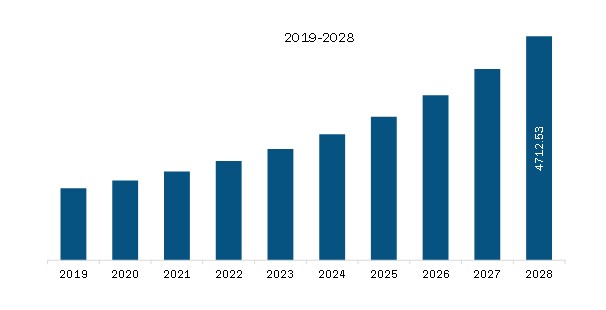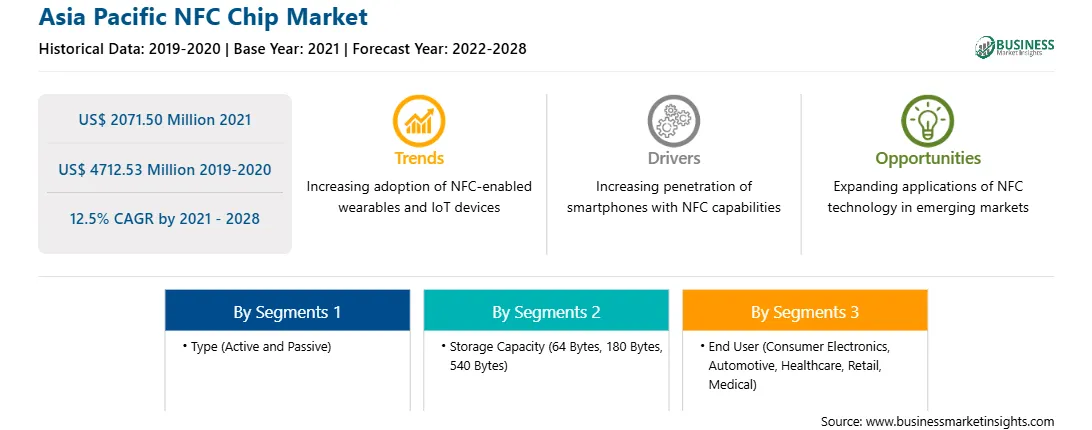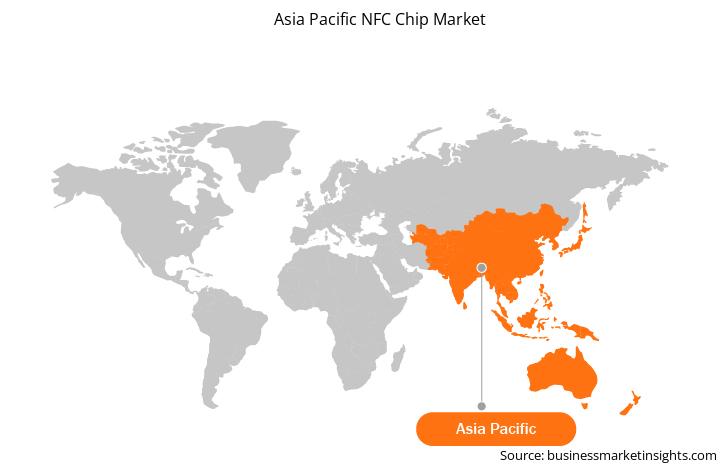The growth of the market is due to are proliferation of NFC-based smartphones and rising demand for contactless payment. However, short operational range and security concerns is expected to restrict the market growth during the forecast period.
NFC (near-field communication) is commonly employed in various communication apps. Patient identification, blood transfusion, drug administration, medical personnel tracking, and medical record access have all been demonstrated in health care. The wave of NFC technology has been merged with the Internet of Things (IoT) technologies in healthcare. NFC technology can improve workflow by combining mobile EMR systems with technology.
Public and private spaces exist in many healthcare facilities, including hospitals, treatment centers, clinics, and pharmacies. It is critical to keep these spaces separate, with only authorized staff having access to medical cabinets or operating rooms. NFC tags can track and log every entrance and exit. Employee badges, smartphones, and other devices can be equipped with NFC for access privileges.
NFC allows hospitals to track who is there and who has done what. Medical personnel may see where a patient is when the nurse last came in and what therapy a doctor just gave in real-time.
Data is gathered and stored in access-controlled databases that may be viewed in various forms to help improve logistics, simplify record-keeping, and avoid errors. Patients' traditional bracelets can be replaced with NFC tags and NFC-enabled wristbands, updated with real-time information, such as drug administration details or which treatment needs to be performed.
When NFC tags are placed on a medication's package or labeling, users can verify the medication's legitimacy, check dosage details, and learn about side effects and drug interactions just by pressing the tag with their smartphone or tablet. The tag can also provide access to web links, extra information, a refill request, or a medical professional's contact information. These are a few examples of how NFC might benefit healthcare. As the industry implements the technology, NFC is expected to significantly enhance care by decreasing costs, boosting efficiency, and improving outcomes in healthcare institutions and at home.

Strategic insights for the Asia Pacific NFC Chip provides data-driven analysis of the industry landscape, including current trends, key players, and regional nuances. These insights offer actionable recommendations, enabling readers to differentiate themselves from competitors by identifying untapped segments or developing unique value propositions. Leveraging data analytics, these insights help industry players anticipate the market shifts, whether investors, manufacturers, or other stakeholders. A future-oriented perspective is essential, helping stakeholders anticipate market shifts and position themselves for long-term success in this dynamic region. Ultimately, effective strategic insights empower readers to make informed decisions that drive profitability and achieve their business objectives within the market.

| Report Attribute | Details |
|---|---|
| Market size in 2021 | US$ 2071.50 Million |
| Market Size by 2028 | US$ 4712.53 Million |
| CAGR (2021 - 2028) | 12.5% |
| Historical Data | 2019-2020 |
| Forecast period | 2022-2028 |
| Segments Covered |
By Type
|
| Regions and Countries Covered | Asia-Pacific
|
| Market leaders and key company profiles |
|
The geographic scope of the Asia Pacific NFC Chip refers to the specific areas in which a business operates and competes. Understanding local distinctions, such as diverse consumer preferences (e.g., demand for specific plug types or battery backup durations), varying economic conditions, and regulatory environments, is crucial for tailoring strategies to specific markets. Businesses can expand their reach by identifying underserved areas or adapting their offerings to meet local demands. A clear market focus allows for more effective resource allocation, targeted marketing campaigns, and better positioning against local competitors, ultimately driving growth in those targeted areas.

The Asia Pacific NFC Chip Market is valued at US$ 2071.50 Million in 2021, it is projected to reach US$ 4712.53 Million by 2028.
As per our report Asia Pacific NFC Chip Market, the market size is valued at US$ 2071.50 Million in 2021, projecting it to reach US$ 4712.53 Million by 2028. This translates to a CAGR of approximately 12.5% during the forecast period.
The Asia Pacific NFC Chip Market report typically cover these key segments-
The historic period, base year, and forecast period can vary slightly depending on the specific market research report. However, for the Asia Pacific NFC Chip Market report:
The Asia Pacific NFC Chip Market is populated by several key players, each contributing to its growth and innovation. Some of the major players include:
The Asia Pacific NFC Chip Market report is valuable for diverse stakeholders, including:
Essentially, anyone involved in or considering involvement in the Asia Pacific NFC Chip Market value chain can benefit from the information contained in a comprehensive market report.